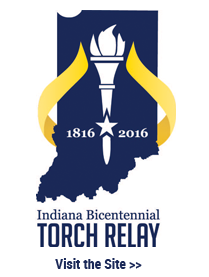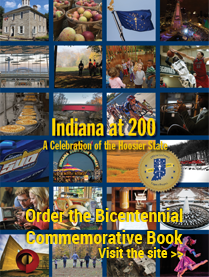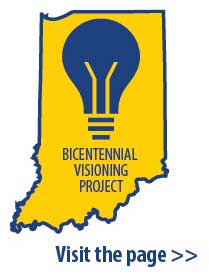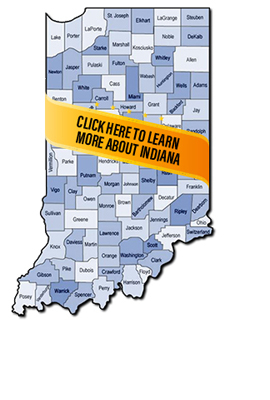- Business & Agriculture
- Residents
- Government
- Education
- Taxes & Finance
- Visiting & Playing
- Family & Health
Jefferson County
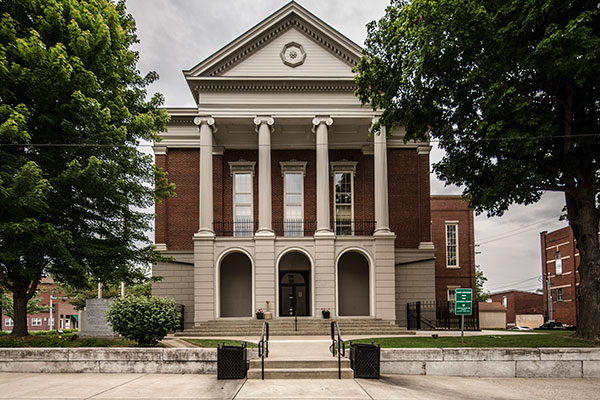
Q&A with County Coordinator Linda Lytle
What do you consider the key accomplishment(s) of your county’s bicentennial celebration?
- Our weekend celebration held in September.
What Legacy Project do you most like to tell people about, and why?
- A teachers educational day set up by our school system and our historic sites.
Describe a highlight or most memorable moment related to your county's bicentennial celebration.
- The torch relay was the highlight of our celebration.
How/where are you preserving information and artifacts related to your county's celebration?
- Jefferson County Historical Society.
Total number of volunteers who participated.
- 45.
Estimated total attendance.
- 800.
Estimated dollar amount spent.
- $1,000.
Jefferson County Legacy Projects
- Art in the Park
- Art in the Park
- Clifty Falls State Park – Bicentennial Nature Trust
- Cradle of Hoosier Heritage
- Georgetown Memorial Park
- Madison Chautauqua Demonstration Village
- Madison Railroads - 1912 Railroad Car Renamed “Legacy”
- Madison's STEAMpower
- Ohio River Frontage – Bicentennial Nature Trust
- Original Play Celebrating Susan B. Anthony's Visit to Madison, Indiana
- Pennywort Cliffs Conservation Area – Bicentennial Nature Trust
- Splinter Ridge Fish & Wildlife Area – Bicentennial Nature Trust
- Splinter Ridge Fish and Wildlife Area - Bicentennial Nature Trust
Jefferson County Facts
Jefferson County was named for Thomas Jefferson, principal draftsman of the Northwest Ordinance and President of the United States from 1801 through 1809. Jefferson County was one of Indiana’s first counties.
During the early years of Indiana’s statehood, financial genius James Franklin Doughty Lanier set our state on a solid financial course that has continued to this day. As a result of his activities in banking and railroad development, he became one of the most important and influential figures in Indiana’s history in the first half of the 19th century.
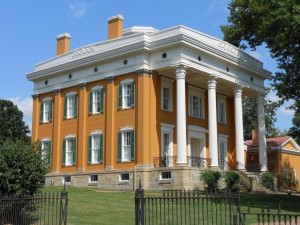 Lanier’s good fortune in business allowed him to hire Madison architect Francis Costigan to design and build a grand home. Completed in 1844, the Lanier Mansion is considered to be one of the finest examples of Greek Revival Architecture in the country.
Lanier’s good fortune in business allowed him to hire Madison architect Francis Costigan to design and build a grand home. Completed in 1844, the Lanier Mansion is considered to be one of the finest examples of Greek Revival Architecture in the country.
In 1925 the Lanier Mansion became a state historic site, part of the Indiana State Museum and Historic Sites. Today the home is acknowledged as the “Crown Jewel” of Madison’s Historic District. Formal gardens developed by Lanier’s son, Alexander, after the Civil War, have been recreated with plant varieties authentic to the period. The Lanier Mansion was designated a National Historic Landmark in 1994.
Indiana’s first “super highway” was the Michigan Road, which was built in the 1830s and 1840s and ran from Madison, Indiana to Michigan City, Indiana via Indianapolis.
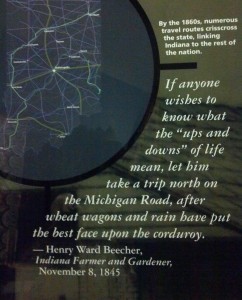 Like the National Road, it did much to spur settlement and economic growth. One-half of the pioneers to settle northwestern Indiana did so by using the Michigan Road to travel from the Ohio River to their destination
Like the National Road, it did much to spur settlement and economic growth. One-half of the pioneers to settle northwestern Indiana did so by using the Michigan Road to travel from the Ohio River to their destination
Many important early Hoosiers came from Madison, including William Hendricks, Indiana’s third governor.
Throughout the early history of the state, Madison was one of the leading cities competing with Vincennes and later New Albany to be the largest city in the state.
County Seat: Madison
Year Organized: 1810
Square Miles: 360.63







